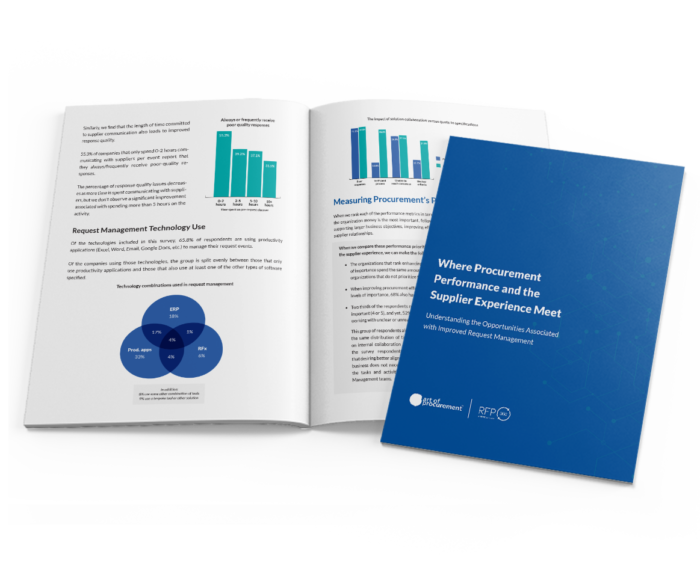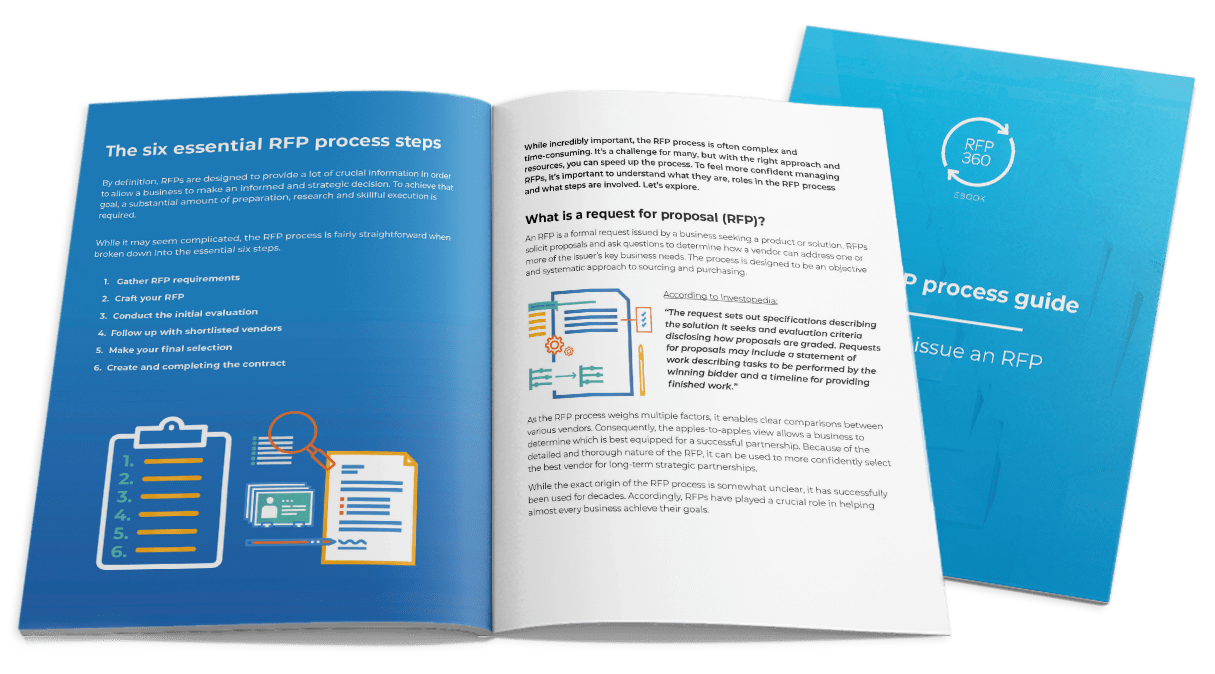How do you measure your procurement team’s performance? It’s a difficult question with no simple answers. When it comes to procurement KPIs, you’ll frequently find that organizations measure only one thing — cost savings. Unfortunately, that approach fails to capture the nuance and scope of the activities required for strategic procurement. In addition, it prioritizes price over value, which can be detrimental to your organization in the long run.
As the practice of procurement evolves, so too must the key performance indicators that help measure success. In this blog, we’ll explore KPIs that offer a more complete picture of the full procurement cycle. We’ll offer background information about procurement KPIs. Additionally, we’ll share a list of KPIs that more holistically capture and quantify the success of the procurement team.
The basics of procurement KPIs
Before building a program to quantify procurement performance, it’s important to understand some background information.
What is a procurement KPI?
A procurement KPI, or key performance indicator, is a metric used to quantify, report and track the effectiveness and success of the procurement department.
Generally, KPIs are presented as numerical data in relation to an established goal or scale. They may also be called sourcing KPIs or purchasing KPIs. Regardless of name, KPIs enable objective, data-based evaluation. Ideally, each department has KPI goals that align to the organization’s big-picture initiatives and objectives.
Why do KPIs matter in procurement?
KPIs offer a way for procurement professionals to benchmark and track spend, efficiency, costs, time and quality. As such, they empower teams to highlight the value they deliver to the business. Additionally, organizations frequently use KPIs to set departmental and individual goals as part of regular performance evaluations.
Why cost savings shouldn’t be your only KPI
Often, the perception of procurement doesn’t reflect the strategic nature of the function. Unfortunately, the complexity of the role is lost on stakeholders who only see the end-results without understanding the work that goes into them. This oversimplification tends to create a hyper focus on cost savings as the most important indicator of success. However, as procurement practitioners know, there’s a lot more to it.
While cost savings should always be an element of your procurement KPIs and goals, it shouldn’t be the only thing you measure. Fixating and emphasizing cost savings above all other procurement KPIs creates an environment that can put the business at risk.
In one extreme but recent example, food manufacturer Kraft Heinz reportedly falsified supplier contracts to increase their cost savings KPI. Then, the company reported the ‘savings’ in quarterly public statements leading to an investigation by the Security Exchange Commission (SEC). Ultimately, the SEC charged Kraft Heinz with fraud, fining them $62 million.
In a recent survey of procurement practitioners, three out of four respondents indicated that cost savings and risk mitigation were their primary procurement KPIs. Respondents indicated that the business perceived other measurements of success like maximizing vendor value, improving efficiency and supporting big-picture business objectives as less important. Organizations that adopt a strategic sourcing approach understand that vendor selection should prioritize overall value rather than cost.
Download the procurement full research here – RFP survey: Understanding the opportunities associated with better request management.

Procurement KPIs to consider
Measuring success is a common challenge for procurement practitioners. Especially when the reliance on simple cost savings as the primary procurement KPI is understandable. After all, cost savings is easy to measure, while other procurement metrics are more difficult to calculate.
However, with the right tools, data and consistency you can create a custom set of procurement KPIs that more accurately reflect the full spectrum of work you do and the value it delivers to your organization. Here you’ll see examples of procurement KPIs to consider tracking and reporting.
Cost KPIs
Let’s start with the cornerstone of all procurement KPIs — cost. Within this category, there are many metrics that reflect savings secured by procurement. Here are the most common costs KPIs used by procurement.
Cost savings
Expressed as a dollar figure or percentage, this cornerstone procurement KPI calculates the total value of vendor discounts offered as a result of procurement negotiations. This may mean renegotiating with a current supplier or seeking, selecting and engaging a new supplier through the request for proposal (RFP) process.
Cost avoidance
Imagine this. An annual renewal is coming with a mission-critical service provider. Looking at historical data, you can see that each year, their cost increases 10 percent. So, you propose a three-year contract renewal at a five percent increase. If the vendor accepts, you’ve just saved your organization a significant amount. This approach is cost avoidance. Essentially, it’s any action taken to reduce future spend.
Price competitiveness
This procurement KPI leverages market data to benchmark category costs and compares your organization’s spend to industry averages. Using this metric helps the procurement team understand market conditions and ensure the organization isn’t overpaying for goods and services.
Companies calculate cost savings in dozens of different ways. This article from procurement leader, Abigail Agbonghae, offers inspiration and examples for cost savings calculations.
Supplier KPIs
The success of your procurement team is closely linked to your vendors. Accordingly, there are multiple procurement KPIs related to supplier relationship management. These metrics will help you track vendor performance and optimize interactions while proactively identifying and addressing any challenges.
Contract compliance
What percentage of vendors are meeting their contractual obligations? For example this could include meeting delivery deadlines, service level agreements and invoice accuracy. Often, organizations establish benchmarks for contractual compliance to ensure the majority of their vendors are delivering the promised value.
Vendor risk management
Managing risk and protecting the business is an important priority for procurement practitioners. Consequently, it’s common to track and report vendor compliance as a procurement KPI using quarterly, bi-annual or annual vendor risk assessments. Set goals to encourage vendors to return questionnaires promptly and incrementally reduce risk in areas of concern.
Vendor performance
Unlike contract management, which focuses on compliance, vendor performance evaluations consider the full spectrum of value vendors deliver. While the process is collaborative and intended to provide feedback to vendors, it is often also a key procurement metric. With a consistent approach to quantifying satisfaction with vendor performance, you can set goals and identify vendors that fall short.
Product quality
Used primarily for direct spend vs indirect, this procurement KPI tracks and reports product issues like defects, returned or damaged goods. This is usually calculated by determining what percent of inventory was unacceptable. Tracking this metric identifies consistently underperforming vendors and helps you prepare proactively to meet future needs.
Lead time
This KPI is the number of days it takes for a vendor to deliver goods or services after a purchase order has been sent and accepted. Once you’ve set a benchmark for suppliers in each category, you can use this metric to set goals for improvement.
Supplier diversity and sustainable sourcing
Procurement has a unique opportunity to support organizational initiatives to address social issues like diversity and sustainability. Setting benchmarks and goals around supplier diversity and sustainable sourcing are a good way to ensure that procurement KPIs reflect priorities of your business.
Operational KPIs
The third way to measure success in procurement is by evaluating individual and team performance. Procurement teams know better than most that time is money. Accordingly, these operational KPIs measure the efficiency and effectiveness of the procurement team.
Spend under management (SUM)
This metric, spend under management, quantifies how much of the total business spend complies with your procurement policy and is appropriately managed by the procurement team. Unmanaged spend or maverick spend, can open your organization up to risk, reduce your ability to accurately forecast expenses and increase waste. Accordingly, procurement teams generally aim to manage 80 percent (or more) of overall spend.
Procurement return on investment (ROI)
Another common way to quantify the value delivered by the procurement team is by calculating return on investment. This calculation divides the cost savings achieved by the internal cost of procurement for a specified time period. The metric is a ratio and can be a good indicator of efficiency. Lean procurement teams that leverage RFP automation and other procurement technology tools enjoy a high procurement ROI.
Procurement cycle time
Similar to vendor lead time, procurement cycle time measures how long the procurement process takes from beginning to end. The KPI is measured in days. Typically, it begins when procurement approves a stakeholder request and ends at contract execution. Long turnaround times discourage stakeholder participation and decrease SUM. Additionally, it may be a symptom of an inefficient RFP process. Fortunately, RFP software helps reduce this cycle time significantly by reducing the hours required to write, issue and evaluate vendors.
Explore the RFP process in detail to optimize efficiency with this ebook – The RFP process guide.
Project delivery
How often are projects delivered on time and within budget? This procurement KPI quantifies the efficiency of your process and your ability to accurately budget. It’s a good way to decide if you need to adjust your procurement policy parameters.
Rate of unplanned purchases
We’ve all been there. An urgent request comes in and you feel pressure to deliver a solution. Often, procurement has less time to research, find the right solution and negotiate the best possible terms. Additionally, vendors charge a premium for quick turnaround times. While you can’t entirely avoid emergency purchases, it’s important to track how often they happen to identify if there’s an underlying cause. If the rate is too high, explore how to improve stakeholder engagement with procurement.
Individual KPIs
In addition to exploring how the procurement department performs as a whole, procurement key performance indicators can also apply to individual team members. Often, the KPIs above can be broken down further to monitor performance by role, category or individual. Here are a few simple procurement KPIs that are useful for individual evaluation.
- Cost savings
- Spend under management
- Procurement cycle time
- Projects on time and within budget
- New contracts negotiated
- Suppliers and contracts managed
- Managed vendor performance
- Stakeholder satisfaction
- Training and development hours
The practice of procurement (and how we measure success) is constantly evolving. Indeed, procurement technology advances rapidly making more and more data available for analysis. At the same time, quantifying complex KPIs becomes much easier.
Ultimately, you can’t improve what you can’t measure. While using key performance indicators to determine success isn’t a perfect system, it can create a more complete picture of the value the procurement team delivers.

